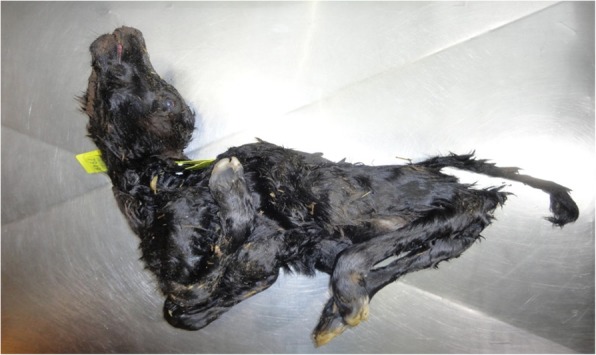In Autumn 2011, nonspecific scientific indicators of pyrexia, diarrhoea, and drop in milk yield have been noticed in dairy cattle close to the German city of Schmallenberg on the Dutch/German border. Targeted veterinary diagnostic investigations for classical endemic and rising viruses couldn’t establish a causal agent. Blood samples have been collected from animals with scientific indicators and subjected to metagenomic evaluation; a novel orthobunyavirus was recognized and named Schmallenberg virus (SBV).
In late 2011/early 2012, an epidemic of abortions and congenital malformations in calves, lambs and goat children, characterised by arthrogryposis and hydranencephaly have been reported in continental Europe. Subsequently, SBV RNA was confirmed in each aborted and congenitally malformed foetuses and in addition in Culicoides species biting midges. It quickly turned evident that SBV was an arthropod-borne teratogenic virus affecting home ruminants.
SBV quickly achieved a pan-European distribution with most international locations confirming SBV an infection inside a yr or two of the preliminary emergence. The first Irish case of SBV was confirmed within the south of the nation in late 2012 in a bovine foetus. Since SBV was first recognized in 2011, a appreciable physique of scientific analysis has been performed internationally describing this novel rising virus.
The goal of this systematic review is to supply a complete synopsis of essentially the most up-to-date scientific literature relating to the origin of SBV and the unfold of the Schmallenberg epidemic, along with describing the species affected, scientific indicators, pathogenesis, transmission, danger components, influence, diagnostics, surveillance strategies and management measures. This review additionally highlights present data gaps within the scientific literature relating to SBV, most notably the requirement for additional analysis to find out if, and to what extent, SBV circulation occurred in Europe and internationally throughout 2017 and 2018.
Moreover, suggestions are additionally made relating to future arbovirus surveillance in Europe, particularly the institution of a European-wide sentinel herd surveillance program, which includes bovine serology and Culicoides entomology and virology research, at nationwide and international degree to observe for the emergence and re-emergence of arboviruses equivalent to SBV, bluetongue virus and different novel Culicoides-borne arboviruses.

Veterinary parasitology instructing – Ten years of expertise with the Vetsuisse curriculum.
Pursuant to the Joint Declaration by 29 European training ministers in June 1999 within the metropolis of Bologna, Italy, the so-called ‘Bologna Process’ was formally launched on the Vetsuisse Faculty (Universities of Zurich and Berne) in Switzerland in 2007. The long-term purpose of restructuring the examine programmes was to create a widespread European Higher Education Area (EHEA), with uniform and clearly outlined requirements for levels (“diplomas”).
Accordingly, the Vetsuisse curriculum was organised as a 3-year Bachelor and a 2-year Master examine program. For the ultimate Federal examination in veterinary medication, each applications and a grasp thesis must be accomplished. Parasitology, as a topic, is launched with chosen examples within the ecology course in the course of the first educational yr.
The second and third years of the Bachelor program comprise non-organ-centred (NOC) and built-in organ-centred (OC) course modules, respectively. In the NOC modules, parasitology is taught in consecutive programs, focussing on matters together with incidence, biology, pathogenesis, scientific manifestations, diagnostics and the strategic ideas of therapeutic and prophylactic interventions towards main veterinary and zoonotic parasites. This syllabus is complemented with dwell demonstrations in addition to sensible laboratory workout routines. Lecture notes, with outlined studying targets, are based mostly on the textbook “Parasitology in Veterinary Medicine” which is accessible freed from cost to college students as an on-line version in German.
